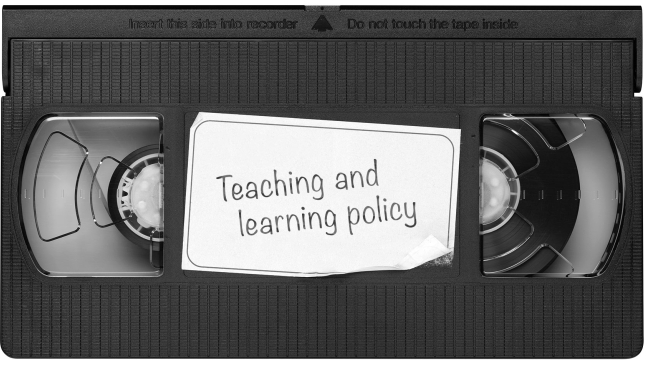As someone who is starting again as a head of department in a school, my mind has been turning to the way we, as a department and as teachers across the school, work together in a coherent way.
I have read a lot of different policies, both departmental and whole-school, and the necessity of some of them is very clear.
Without a behaviour policy setting out how rewards and sanctions will be used, pupils could end up being treated very differently from place to place and chaos could ensue. Without a safeguarding policy, things could fall between the gaps, leaving children at risk.
But what about a teaching and learning policy? What is it for? And do we need one?
One thing a teaching and learning policy should do is make life easier for both pupils and teachers.
It should help pupils to understand what is expected in each lesson, taking away some of that stressful uncertainty that, in secondary schools at least, can come from seeing five or more different teachers a day, all with their own competing ideas about how learning should happen in their class.
For teachers, it should provide clarity about what leaders expect of them. If a policy sets out what leaders are looking for in a lesson, it gives teachers an opportunity to either argue for change, find a different school that aligns with their own ideas or embrace the shared vision.
More from Mark Enser:
In my former life as one of His Majesty’s inspectors with Ofsted, I saw first-hand how teaching and learning policies can go wrong.
At times, they became little more than a list of non-negotiable practices that distorted the curriculum of individual subjects, trying to make each lesson tick off the ever-growing list of things that had to be demonstrated.
I saw art lessons disrupted by the need to force a mini-plenary every 10 minutes and technology classes with little time for practical work as the teacher tried to include a lengthy retrieval quiz at the start of each 50-minute lesson.
More often, teaching and learning policies went wrong because they were adopted in overly tokenistic ways. School leaders decided on activities or strategies they thought should be used across the school and subject leads were directed to adapt their curriculum plans to ensure that they aligned to this new direction.
A new column would be added to the long-term plans to say how this topic or lesson addressed whatever it was the leaders had become excited about and then nothing more happened.
The problem here was that, although there was a sense of purpose driving decisions, this had not been followed up by deliberate action. Simply telling people that something is now a priority doesn’t make it their priority. People don’t magically have more time to make it so. Then the policy dies on the page.
A more meaningful approach
Where I have seen a meaningfully, coherent approach to a teaching and learning policy, leaders have, firstly, communicated it clearly and taken the time to ensure buy-in. All staff could communicate both the purpose and their role in bringing it about.
Secondly, leaders had ensured that there were systems in place to support the common purpose. The assessment and reporting system, for example, being aligned with the goals of the teaching and learning policy, or a behaviour system that supports the way that the policy is encouraging pupils to learn, such as sanctions for not completing homework or rewards for those who go above and beyond.
Thirdly, and most importantly, successful policies focused on principles rather than specific practices. A solid principle for learning is that pupils need a chance for independent practice to build fluency in applying the knowledge they have gained.
However, issuing an edict that all lessons must have 10 minutes of independent practice is likely to lead to all kinds of unintended consequences if teachers feel pressured to include it when pupils aren’t ready for this independent work.
Thinking about my own role as a head of department, I can see the value of a teaching and learning policy that sets out how we want to approach our lessons. However, I can also see that it would be very easy to get such a policy wrong.
The main lesson I have taken away is the importance of taking a collaborative approach to creating such a policy and the need to see the policy as a living document that will need further refinement as time goes on.
Mark Enser is an author and a head of geography in a school in the North West of England
For the latest research, pedagogy and classroom advice, sign up for our weekly Teaching Essentials newsletter






